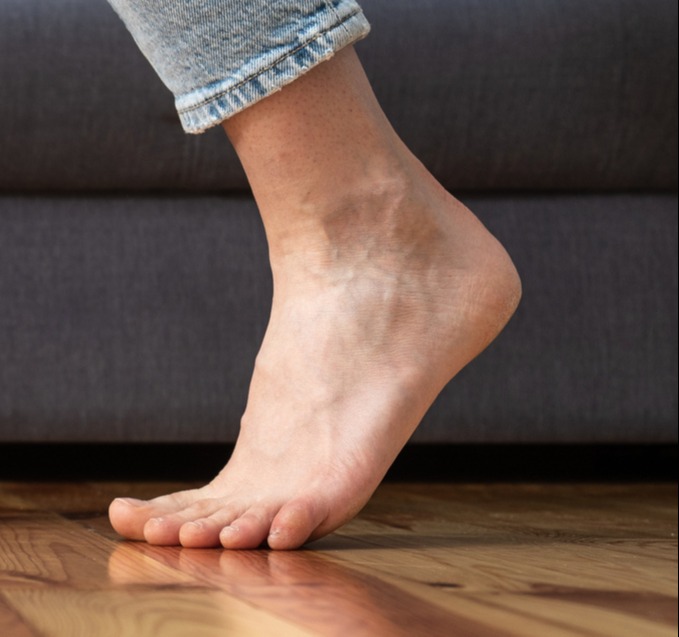How FES helps with foot drop
 Foot drop – difficulty lifting the foot up at the ankle when swinging the leg forward – is a common and often early cause of walking difficulties in people with Multiple Sclerosis.
Foot drop – difficulty lifting the foot up at the ankle when swinging the leg forward – is a common and often early cause of walking difficulties in people with Multiple Sclerosis.
As well as leading to trips and falls, it also means walking takes more effort. This causes fatigue and reduces the amount of activity a person can do. For some, footdrop can be present all the time; for others it comes on after a period of walking, but recovers after a rest (neuromuscular fatigue).
Physiotherapy and orthotics
Physiotherapy can help alleviate footdrop. An Ankle Foot Orthosis (AFO), a type of splint, can make walking easier, although many people find these devices uncomfortable, and footwear options are limited.
Functional Electrical Stimulation
An alternative approach is to mimic normal walking with Functional Electrical Stimulation (FES). Electrodes worn on the surface of the skin send electrical impulses through to the nerve and muscles responsible for lifting the foot.
Benefits of FES
 Many FES users report improvements in posture, walking pattern and balance, and fewer falls, all of which lead to safer walking. They also find fatigue levels and musculoskeletal pain are lessened.
Many FES users report improvements in posture, walking pattern and balance, and fewer falls, all of which lead to safer walking. They also find fatigue levels and musculoskeletal pain are lessened.
Regular exercise is neuroprotective and promotes cardio-vascular health in people with MS. But keeping up with an exercise regimen can be hard, especially with the psychological barriers and physical limitations that MS can bring. Regular use of FES can help people with footdrop maintain regular activity, probably as it makes it less tiring.
FES has also been shown to help people with increasing disability to maintain the ability to walk. In some cases, it can make the difference between being able to walk or not.
Accessing FES
FES is not suitable for everyone, and an assessment by a trained practitioner is essential. But the use of FES is still limited, despite many people preferring FES to orthotics. Limited NHS funding means people There is also limited expertise to assess and programme FES.
Because of the progressive nature of MS, FES devices may need to be re-programmed to accommodate gait changes.
If you have MS and start to develop problems with walking, or you have foot drop and notice changes in your gait, don’t leave it to deteriorate. It’s important to seek a referral to a physiotherapist for treatment and advice as soon as possible.
For detailed information on FES, see Davies Smith A, Prokopiusova T, Jones R, Burge T, Rasova K. Functional electrical stimulation for foot drop in people with multiple sclerosis: The relevance and importance of addressing quality of movement. Multiple Sclerosis Journal. 2021;27(5):653-660. doi:10.1177/1352458520923958

